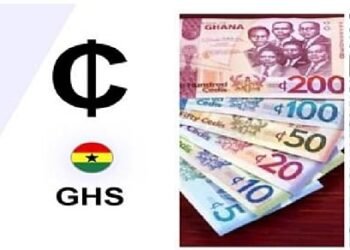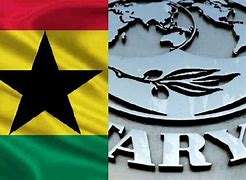Moody’s Investors Service (Moody’s) has downgraded the Government of Ghana’s long-term issuer and senior unsecured debt ratings to Caa1 from B3 and changed the outlook to stable from negative.
Moody’s downgrade came exactly a month after Fitch downgraded Ghana’s Long-Term Foreign-Currency Issuer Default Rating (IDR) to ‘B-’ from ‘B’ with a negative outlook. Meanwhile, Moody’s has also downgraded the senior unsecured MTN programme ratings to (P)Caa1 from (P)B3 and the backed senior unsecured debt rating to B3 from B1.
The downgrade to Caa1 reflects the increasingly difficult task the government faces addressing its intertwined liquidity and debt challenges. Moody’s stated that weak revenue generation constrains government’s budget flexibility and tight funding conditions on international markets have forced the government to rely on costly debt with shorter maturity.
Moody’s estimates that interest payments will absorb more than half of government’s revenue over the foreseeable future, which is exceptionally high compared to peers at all rating levels. As a remedy, the government has proposed sharp fiscal consolidation and a switch to borrowings from external partners on more favourable terms, the rating agency stated.
However, Moody’s explained that the strategy comes with sizeable implementation risks, especially in a still-fragile post-pandemic environment and while international market creditors price in very wide risk premia.
“While Ghana’s external buffers and moderate external debt amortization schedule in the next few years afford the government a window of opportunity to deliver on its strategy, balance of payments pressures will build up, the longer government’s large financing requirements have to rely on domestic sources”.
Moody’s
Rationale For The Stable Outlook
Moody’s explained that the stable outlook balances Ghana’s significant fiscal challenges, large financing needs and funding constraints against the government’s pre-pandemic track record of relatively effective policies and maintenance of a variety of funding sources.
On the downside, Moody’s underscored that the constraints to policymaking posed by interest payments absorbing such a large proportion of the budget, risk undermining growth and, over time, social stability.
“However, while the capacity of the government to reduce its borrowing needs is limited, in 2022-23, refinancing will be primarily for local currency debt, providing a time-window for the government to deliver on its fiscal consolidation strategy and engender confidence that may restore its access to a broader range of external funding sources”.
Moody’s
Meanwhile, Ghana’s institutional framework and dynamic economy remain key credit supports. According to Moody’s, the government has built a track record of meeting fiscal targets in the years preceding the pandemic-related shock in 2020, managing to consolidate its primary balance by 4.5% of GDP between 2016 and 2019. Improvements to Ghana’s personal and property tax systems and customs will likely continue and help the government in its efforts to improve tax compliance, the rating agency expressed.
Also, Moody’s highlighted that the country’s strong growth potential from multiple sources both in the oil and non-oil sectors, underpin Moody’s expectation for growth in the range of 4.5-6% over the medium term.
Concurrent to the rating downgrade, Moody’s has also downgraded Ghana’s bond enhanced by a partial guarantee from the International Development Association (IDA, Aaa stable) to B3 from B1, reflecting a blended expected loss now consistent with a one-notch uplift on the issuer rating.
Moody’s lowered Ghana’s local currency (LC) and foreign currency (FC) country ceiling to respectively B1 and B2 from Ba3 and B1.
The rating agency explained that non-diversifiable risks are appropriately captured in a LC ceiling three notches above the sovereign rating, taking into account relatively predictable institutions and government actions, low domestic political, and geopolitical risk; balanced against a large government footprint in the economy and the financial system and current account deficits.
“The FC country ceiling is maintained one notch below the LC country ceiling, reflecting constraints on capital account openness and fiscal policy effectiveness against robust foreign exchange reserves buffers and an average monetary policy effectiveness”.
Moody’s
Factors That Could Lead To An Upgrade Or Downgrade Of The Ratings
Moody’s clarified that it could downgrade Ghana’s ratings if it expects government to face heightened difficulty in covering its funding needs, increasing the likelihood of default. This could be evident in a sharper increase in interest rates than currently expected by Moody’s and could result from underperforming fiscal results. Moreover, there would be downward pressure on the ratings should Ghana’s currency, the cedi, weaken significantly with limited scope for a reversal.
Conversely, Moody’s would likely upgrade Ghana’s ratings if fiscal consolidation proceeded more rapidly, resulting in much more favorable funding conditions for the government and indicating stronger policy credibility. Evidence that government’s funding options have broadened sustainably would also provide a path back to a higher rating level.
READ ALSO: Sekondi-Takoradi MCE: The Man Should Be Out Of Office- Prof Anin























